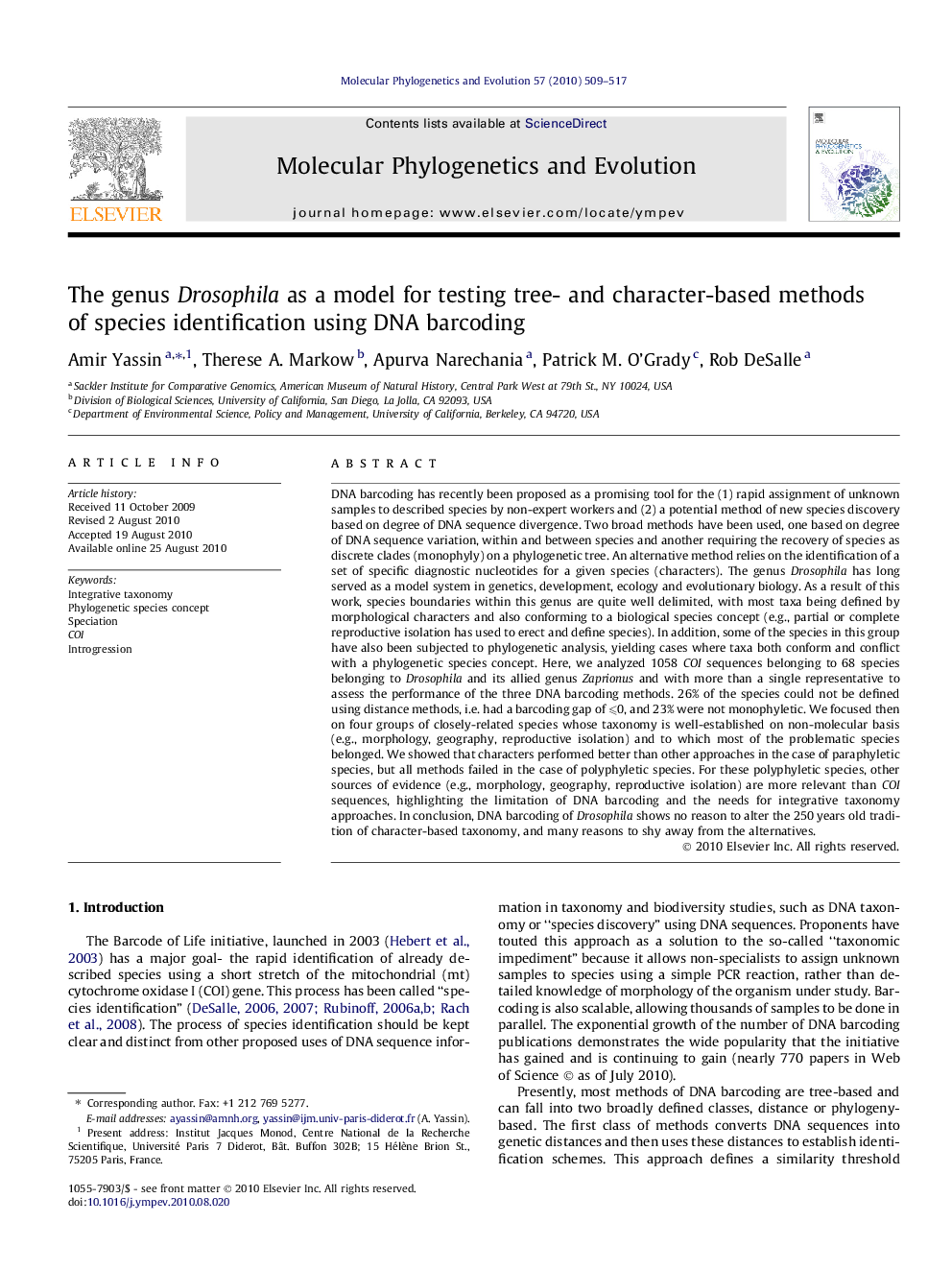| Article ID | Journal | Published Year | Pages | File Type |
|---|---|---|---|---|
| 5920925 | Molecular Phylogenetics and Evolution | 2010 | 9 Pages |
DNA barcoding has recently been proposed as a promising tool for the (1) rapid assignment of unknown samples to described species by non-expert workers and (2) a potential method of new species discovery based on degree of DNA sequence divergence. Two broad methods have been used, one based on degree of DNA sequence variation, within and between species and another requiring the recovery of species as discrete clades (monophyly) on a phylogenetic tree. An alternative method relies on the identification of a set of specific diagnostic nucleotides for a given species (characters). The genus Drosophila has long served as a model system in genetics, development, ecology and evolutionary biology. As a result of this work, species boundaries within this genus are quite well delimited, with most taxa being defined by morphological characters and also conforming to a biological species concept (e.g., partial or complete reproductive isolation has used to erect and define species). In addition, some of the species in this group have also been subjected to phylogenetic analysis, yielding cases where taxa both conform and conflict with a phylogenetic species concept. Here, we analyzed 1058 COI sequences belonging to 68 species belonging to Drosophila and its allied genus Zaprionus and with more than a single representative to assess the performance of the three DNA barcoding methods. 26% of the species could not be defined using distance methods, i.e. had a barcoding gap of ⩽0, and 23% were not monophyletic. We focused then on four groups of closely-related species whose taxonomy is well-established on non-molecular basis (e.g., morphology, geography, reproductive isolation) and to which most of the problematic species belonged. We showed that characters performed better than other approaches in the case of paraphyletic species, but all methods failed in the case of polyphyletic species. For these polyphyletic species, other sources of evidence (e.g., morphology, geography, reproductive isolation) are more relevant than COI sequences, highlighting the limitation of DNA barcoding and the needs for integrative taxonomy approaches. In conclusion, DNA barcoding of Drosophila shows no reason to alter the 250 years old tradition of character-based taxonomy, and many reasons to shy away from the alternatives.
Graphical abstractDownload full-size image.Research highlights⺠DNA barcoding can be used to identify a species either based on a pre-defined sequence divergence (distance), monophyly (tree), or sets of diagnostic nucleotides (characters). ⺠Species of the genus Drosophila are well-defined and thus are used to compare the identification success of the three methods. ⺠The three methods worked successfully in 74% of cases (68 species studied), wherein intraspecific sequence differences were always smaller than inter-specific ones. ⺠In the remaining problematic cases, character-based methods identified 9% additional species.
